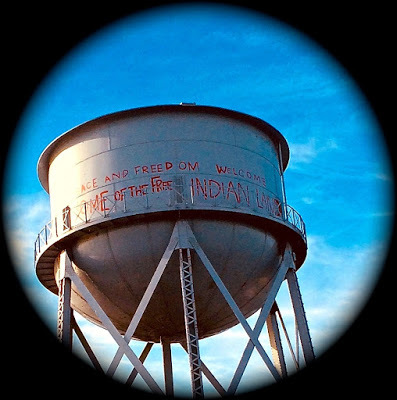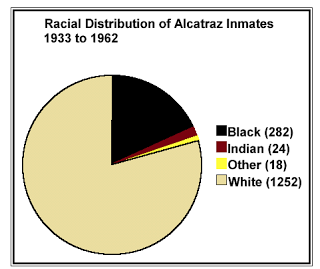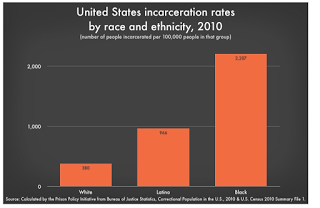Alcatraz
 Grafiitti from Indian protests at Alcatraz, 1969-1971, preserved by US National Park Service
Grafiitti from Indian protests at Alcatraz, 1969-1971, preserved by US National Park Service along with other signs. A video offered to tourists fairly documents the occupation
and includes interviews with participants.
Visiting Alcatraz was never a bucket list item of mine, but Lorna and I had some time to kill on a recent trip to San Francisco and what better place to kill time than a prison? It actually turned out to be a considerably more interesting and educational visit than I had expected. Like most Americans, I knew of Alcatraz primarily as a prison. I had no idea that it started out as a Federal garrison, which in combination with two other strategic points around San Francisco Bay formed a triangular defense against foreign invasion…by sea! The absence of a credible threat led to its obsolescence for this purpose and eventually its cannons passed their “use by” date. It was then converted to a prison for traitors in the Confederate cause, captured Indians, and others deemed enemies of the state.
It didn’t become the prison of Hollywood legend until the 1930s, when an auspicious stream of criminals began taking the short ferry ride over the Bay’s strong, swift current to their new home behind iron bars: Al Capone…Mickey Cohen…Machine Gun Kelly…Creepy Karpis…Robert Stroud (the “Birdman of Alcatraz”). Their photos proudly line the walls of the current tourist site, much like paintings of past presidents line the White House. And like those White House images, most all of the Alcatraz faces are of white men. The only black face on display in fact is that of a former prison guard. That’s the first thing that’s striking about Alcatraz in this time of mass incarceration of black men…the overwhelming sight of white-faced criminals. And it’s not just superficial…it’s factual.
 Makes one wonder: when did the face of American crime go from white to black? As I mentioned a few posts ago, one of the curious things about the classic 1940s film His Girl Friday is that the murder case that drives the plot is of a white man killing a black cop. Growing up in the 50s, the killer who kept me awake at night was Charles Starkweather, the gangs that terrorized my TV and movie screens were led by Edward G. Robinson, Bruce Gordon, Sterling Hayden…and a host of other mean looking white guys. The coach of our little league team worked at the local prison farm and arranged for our team and another to play an exhibition game for the prisoners who feted and cheered us…and only one black face among them. So why do so many Americans nowadays associate crime with black faces? The US prison population still consists of a large number of white criminals, but as a proportion of the entire white population, it’s no where near as suspiciously excessive as that of the black prison population as a proportion of the general black population:
Makes one wonder: when did the face of American crime go from white to black? As I mentioned a few posts ago, one of the curious things about the classic 1940s film His Girl Friday is that the murder case that drives the plot is of a white man killing a black cop. Growing up in the 50s, the killer who kept me awake at night was Charles Starkweather, the gangs that terrorized my TV and movie screens were led by Edward G. Robinson, Bruce Gordon, Sterling Hayden…and a host of other mean looking white guys. The coach of our little league team worked at the local prison farm and arranged for our team and another to play an exhibition game for the prisoners who feted and cheered us…and only one black face among them. So why do so many Americans nowadays associate crime with black faces? The US prison population still consists of a large number of white criminals, but as a proportion of the entire white population, it’s no where near as suspiciously excessive as that of the black prison population as a proportion of the general black population:

Lots of analyses of why that is so… the most common and logical is that the “war on drugs” has been a de facto war on black people. I’ll leave it at that because I didn’t intend this post as examination of such a very big and important question. It’s just that Alcatraz got me wondering if white folks had gotten better behaved since its heyday or did black folks just get badder?
Aside from its pre-prison history and prison demographics, another very conspicuous feature of Alcatraz is how openly, honestly, and fairly the US National Park Service has embraced its Native American protest past. After the prison was shut down because it was too expensive to maintain and the island was virtually abandoned, a broad coalition of Indian tribes occupied it for two years, making a number of not so unreasonable demands. Among them was that the US government honor some of the treaties it had signed with tribes in the past and that the island be returned to Native Americans who essentially owned it for thousands of years before white men “discovered” it. They didn’t get all their demands, but their protest drew national attention to the sorry state of Indian affairs and the government did negotiate with them for remedies to some of their grievances. Chief among them was termination of the Indian termination policy, which had allowed the government to withdraw recognition of tribes, thereby cancelling certain hard-won tribal privileges. A new policy of Indian self-determination was announced by the US President with these words:
"It is long past time that the Indian policies of the Federal government began to recognize and build upon the capacities and insights of the Indian people. Both as a matter of Justice and as a matter of enlightened social policy, we must begin to act on the basis of what the Indians themselves have long been telling us. The time has come to break decisively with the past and to create the conditions for a new era in which the Indian future is determined by Indian acts and Indian decisions."That president was Richard M. Nixon. And in this time when there is so much discussion about the comparison between Nixon and Donald Trump regarding their corresponding awfulness as Presidents, one must marvel at the level of intelligence, compassion, and leadership Nixon brought to that statement. It is so far beyond anything in Trump’s short-fingered reach. In a similar situation, Trump no doubt would send in the marines to end that Indian occupation as soon as it started with orders to shoot to kill…and all to the rapturous cheers of his white-hot angry base. Indeed, I suspect if Trump were not so distracted by the many other trivial matters that occupy his tiny mind, he would order the removal of all signs of the Indian occupation, such as the graffiti painted on the water tower above.
As it stands now, Alcatraz actually enshrines our nation’s protest tradition and demonstrates that a large, diverse, free and self-assured country can listen and learn from its most discontented citizens. Coincidently, the day after our visit, controversial Colin Kaepernick showed up at Alcatraz to join the Indians gathered there to mark the anniversary of their protest. His appearance was further evidence that Kaepernick is not a one-trick pony when it comes to protest of conscience. He’s rather dedicated to social justice in the broadest possible sense. In fact, looking at the history of Alcatraz frees one to imagine a day when the NFL might unveil a statue of Colin Kaepernick at its hall of fame in Canton. We always have escape from the prison of the mind.
Published on December 01, 2017 10:30
No comments have been added yet.



